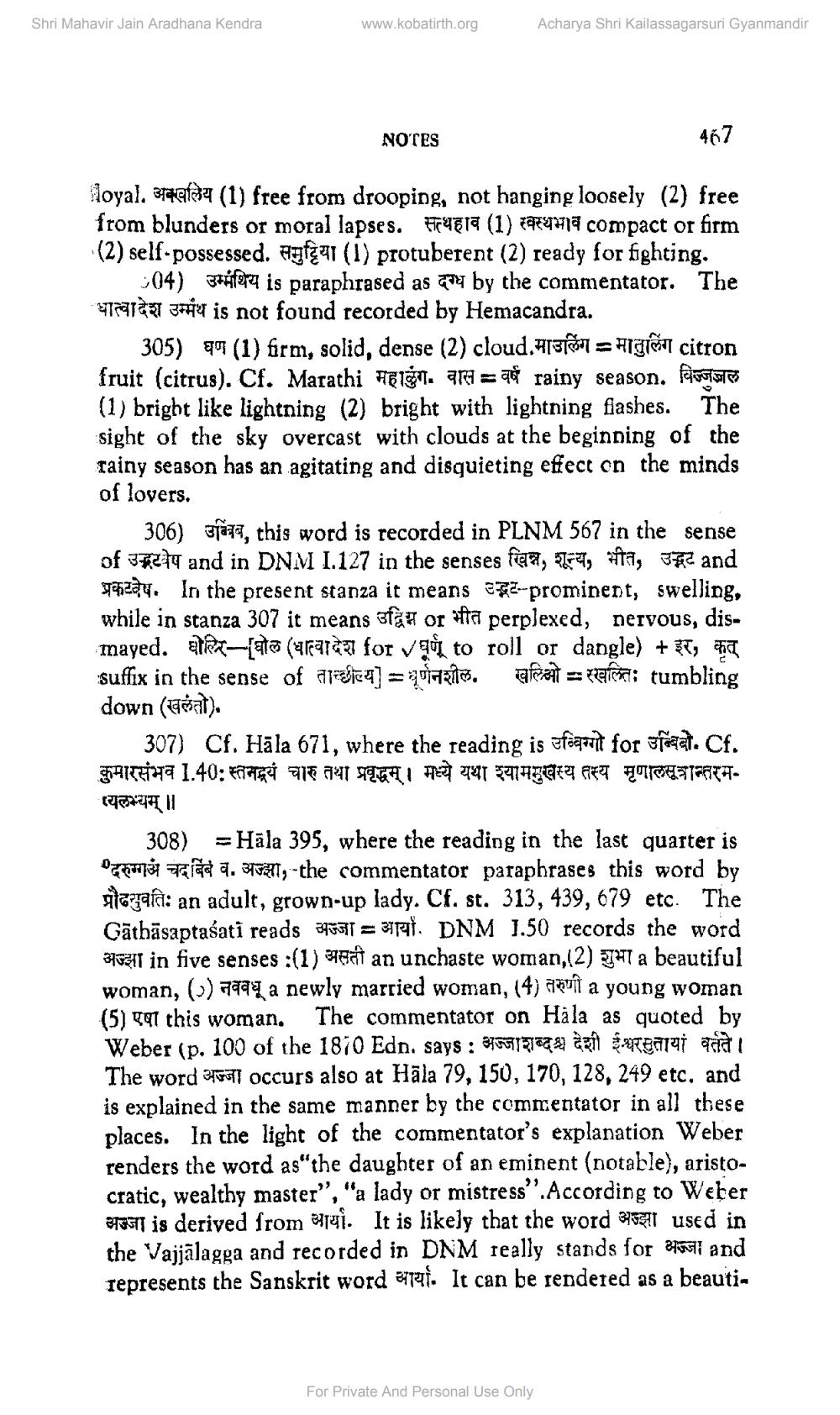________________
Shri Mahavir Jain Aradhana Kendra
www.kobatirth.org
Acharya Shri Kailassagarsuri Gyanmandir
NOTES
467
loyal. Salsa (1) free from drooping, not hanging loosely (2) free from blunders or moral lapses. सत्यहाव (1) स्वस्थभाव compact or firm (2) self-possessed. Aufgai (1) protuberent (2) ready for fighting.
304) 3744 is paraphrased as 974 by the commentator. The 27291 3744 is not found recorded by Hemacandra.
305) 9 (1) firm, solid, dense (2) cloud.Atol = Rigid citron fruit (citrus).Cf. Marathi महाकुंग. वास = वर्ष rainy season. विज्जुजल (1) bright like lightning (2) bright with lightning flashes. The sight of the sky overcast with clouds at the beginning of the rainy season has an agitating and disquieting effect on the minds of lovers.
306) 37a, this word is recorded in PLNM 567 in the sense of उद्वेष and in DNM I.127 in the senses खिन्न, शून्य, भीत, उद्भट and
24. In the present stanza it means -prominent, swelling, while in stanza 307 it means ta or ifta perplexed, nervous, dismayed. B -{ata (Pratay for vaul to roll or dangle) + $T, FI suffix in the sense of acted] =maits. QA = Teitti tumbling down (adat).
307) Cf. Hāla 671, where the reading is efeqnit for sfaat. Cf. 4174129 1.40: Foari 918 aut search I F 27417Agel flet 2017 TAFT. प्यलभ्यम् ॥
308) = Hāla 395, where the reading in the last quarter is दरुग्गअं चदबिंब व. अज्झा, the commentator paraphrases this word by starafa: an adult, grown-up lady. Cf. st. 313, 439, 679 etc. The Gāthāsaptašati reads 4531 = 3779). DNM 1.50 records the word Hal in five senses :(1) set an unchaste woman,(2) JHT a beautiful woman, (-) 7991 a newly married woman, (4) anvît a young woman (5) 897 this woman. The commentator on Håla as quoted by Weber (p. 100 of the 1870 Edn, says : 3463717643 azt surteniat ada The word stil occurs also at Hāla 79, 150, 170, 128, 249 etc, and is explained in the same manner by the commentator in all these places. In the light of the commentator's explanation Weber renders the word as the daughter of an eminent (notable), aristocratic, wealthy master", "a lady or mistress”. According to Weber 3571 is derived from 84. It is likely that the word 3531 used in the Vajjālagga and recorded in DNM really stands for 2471 and represents the Sanskrit word 37721. It can be rendered as a beauti
For Private And Personal Use Only




